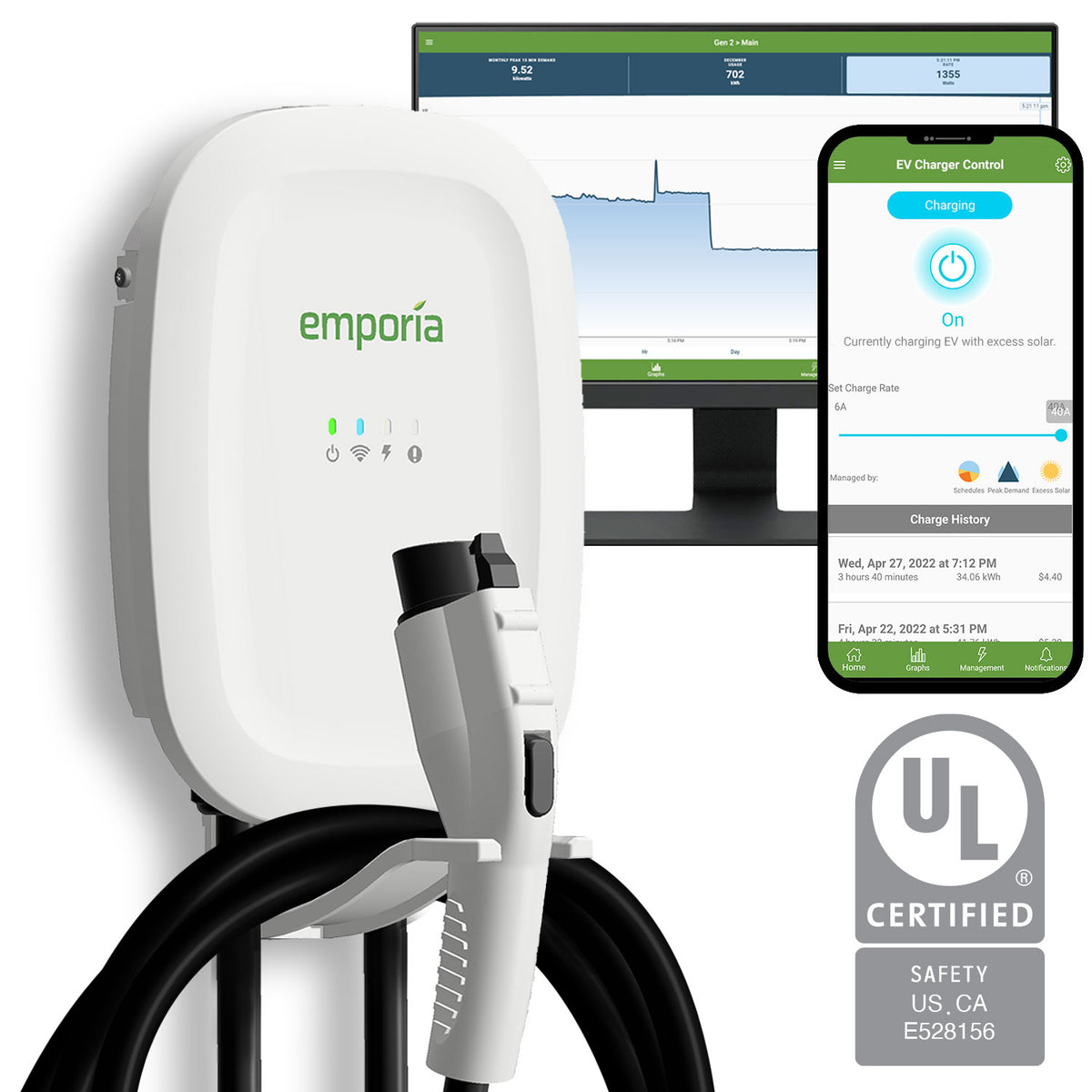I also found this EV Charger from Emporia... I have their
Vue home energy monitor, and their EV charger sounds cool too.
The Emporia EV Charging Station is a Level 2 electric vehicle charger that charges any EV up to 40 amps with NEMA 14-50P or up to 48 amps with hardwired installation. It comes with a 25’ cable with an SAE J1772 connector so it works with all electric cars.

shop.emporiaenergy.com
Once the charger is set to "standby"... according to their rep ... anyone with a common EV or PHEV (Tesla, Chevy, Volvo, etc) could plug in. And the Emproia Vue would instruct the vehicle to charge at whatever amps necessary to absorb the solar generation that would otherwise go past the meter.
The homeowner with this EV charger would also need a Vue energy monitor on the load side of the meter main. This is necessary since the Emporia Vue tells the Emporia EV Charger what solar output is about to backfeed the utility meter.
@srs5694, I'm in California... and there are two things shaping up that make an EV charging with excess solar important:
1) Solar customers pay a non-bypassable-charge (NBC) for every kWh that goes back to the grid. With NEM 2.0 (the current net metering), this is about $0.026 (two point six cents) per kWh. So pretend there's a home on average is generating 10,000 kWh per annum solar; of which 8,000 kWh is backfed to the grid to be used later when the sun sets. This example homeowner is paying 8,000 x $0.026 = $208 per year in NBCs. If instead 2,000 kwh is funneled into their EV during sun-up, there would be no NBC on this portion and the homeowner saves $52 per year.
2) Under the upcoming California net energy metering (NEM) 3.0, the NBC goes up about $0.01 per kWh. Plus, the CPUC is set to approve what amounts to a "solar tax" while simultaneously destroying the value of credits earned when a solar customer exports to the grid. The solar tax is currently proposed to be $8 per kWp AC per month. That means a 8 kWp AC solar system is "taxed" $64 per month ($768 per year) just to be permitted to export energy back to the grid. And, the proposal will drop the value of solar exports to the grid down to a new rate that ranges between only $0.04 per kWh and something around $0.10 per kWh near sun-down. There is no reasonable way the solar exports can offset the NBCs and $8 / kWp AC / month tax.
Adding all these factors together makes having a future solar system in California actually punitive to export to the grid. The homeowners in the
Energy Subforum have been running numbers, and in all instances we've determined that under the proposed NEM 3.0... homes are better off with a solar array that generates energy ONLY to be used at that home (including stored in batteries at the home). The solar inverters and power control systems at the home would have to be intelligent enough to modulate down the solar production to make sure no backfeed to the grid. Said differently, the NEM 3.0 proposal is a motive for people to just not have NEM.
In summary, being able to charge an EV (or neighbors EVs) to prevent grid exports will be paramount in California very soon. While existing solar customers are grandfathered for a few more years, some of the early solar adopters are actually about to have their grandfathering expire once the new NEM 3.0 rules are put into effect. Those homeowners will either face the tough decision of either ripping out their solar, or finding alternatives to net metering.





